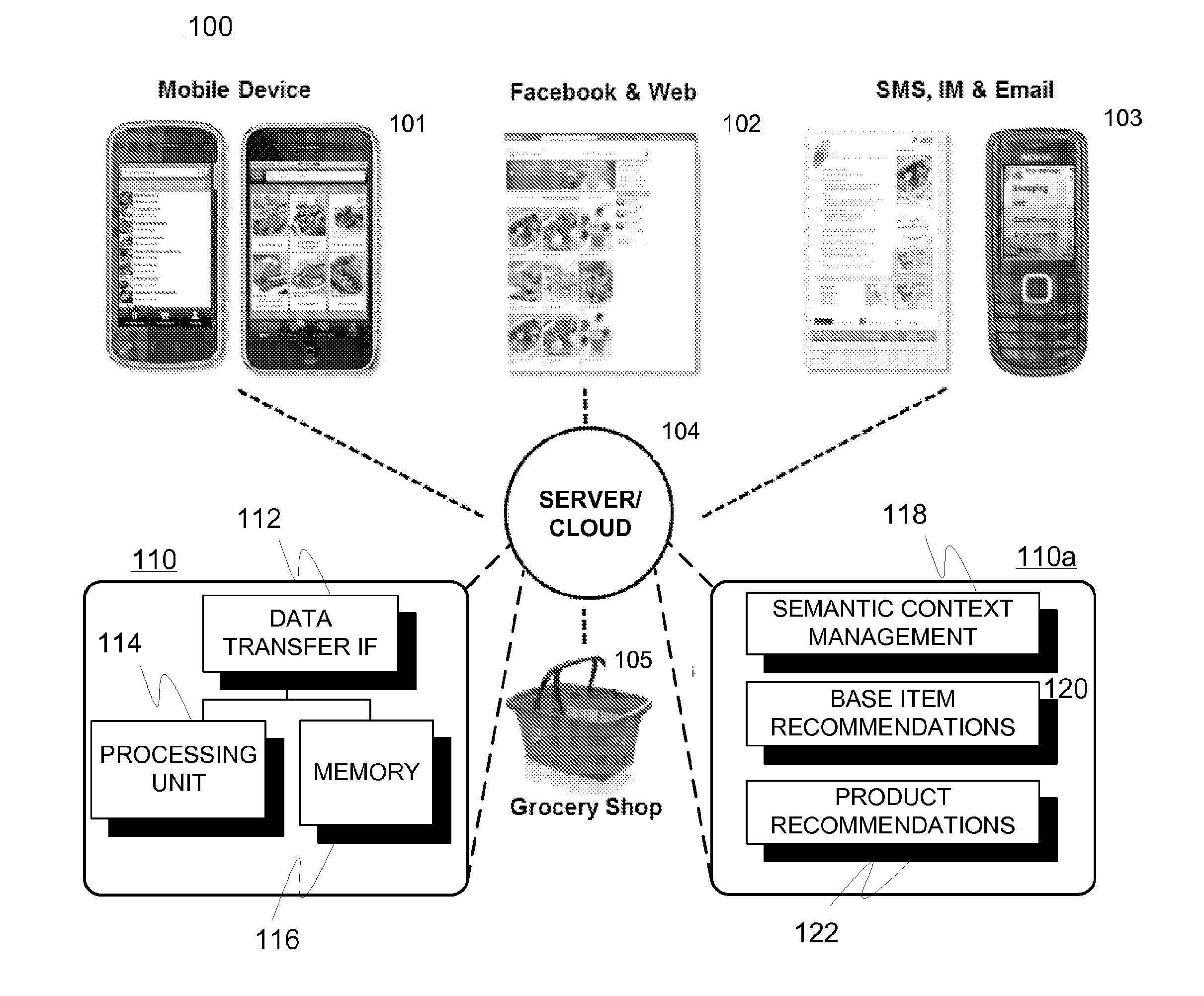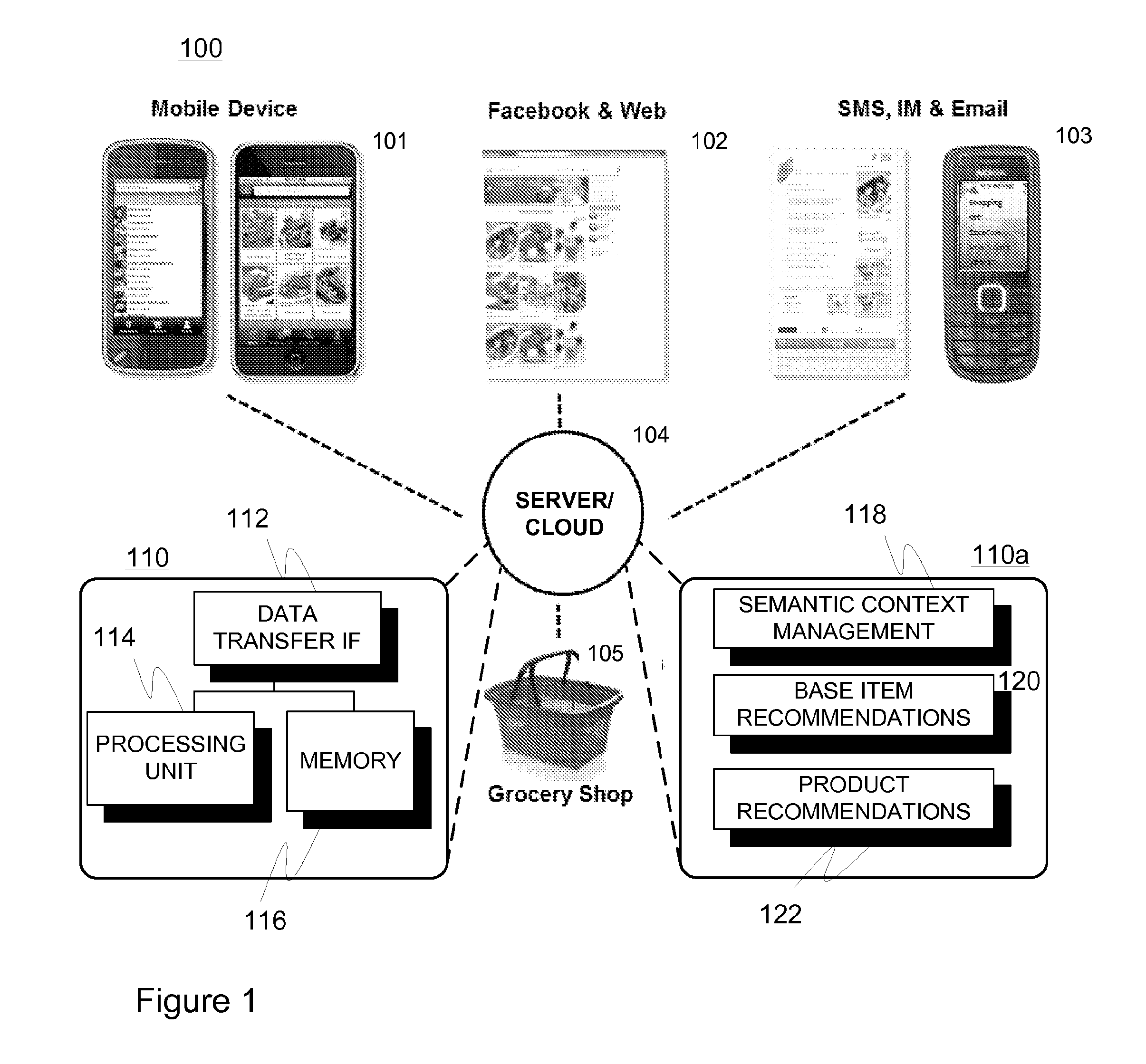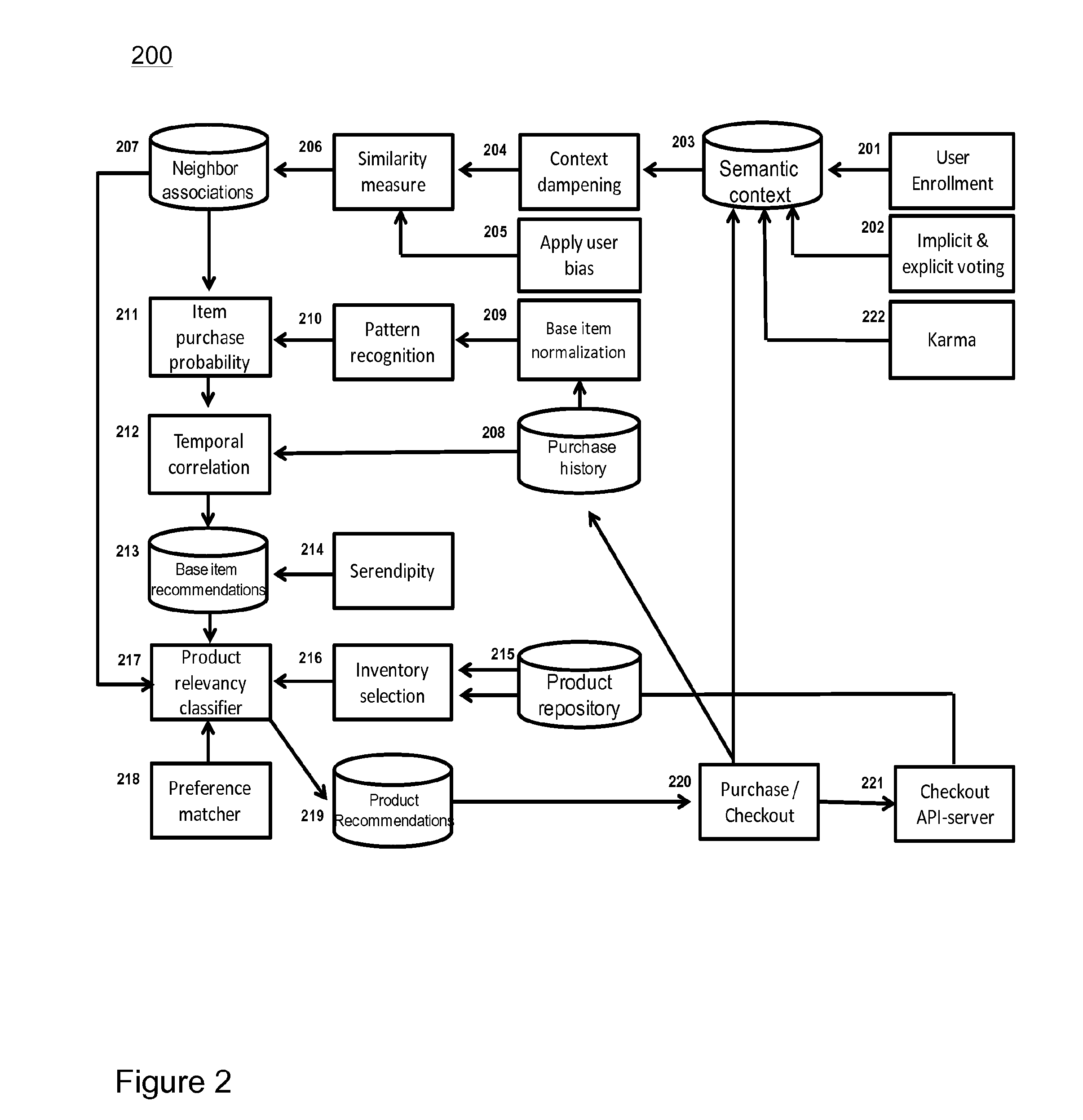Arrangement for facilitating shopping and related method
a technology for facilitating shopping and shopping lists, applied in the field of assisted shopping, can solve the problems unable to achieve popularity of computer generated meal plans or shopping lists, and unable to take into account the methods of purchase history, so as to facilitate generating independent grocery recommendations for retailers and reducing the amount of seed information. , the effect of reducing the time spent planning grocery purchases
- Summary
- Abstract
- Description
- Claims
- Application Information
AI Technical Summary
Benefits of technology
Problems solved by technology
Method used
Image
Examples
Embodiment Construction
[0042]In various embodiments of the present invention, a multi-factor or multi-step, such as two-factor / two-step, recommendation logic to predict future grocery purchases is advantageously applied. The provided arrangement is based on semantic recommendations, which may be computed by a network server or a cloud-based internet service comprising a plurality of servers, for instance. Information regarding the predicted grocery purchases may be delivered towards users via service satellites to virtual places where users generally spend time (e.g. Facebook) and / or to the internet devices that the users carry with them (e.g. iPhone). The service is preferably offered to the users in their habitat, on their own terms.
[0043]With reference to FIG. 3, a service entity such as a server and the service logic associated therewith may be first configured to determine, regarding a user of the service, a list or other structure 302 of more generic grocery recommendations, i.e. a list of recommend...
PUM
 Login to View More
Login to View More Abstract
Description
Claims
Application Information
 Login to View More
Login to View More - R&D
- Intellectual Property
- Life Sciences
- Materials
- Tech Scout
- Unparalleled Data Quality
- Higher Quality Content
- 60% Fewer Hallucinations
Browse by: Latest US Patents, China's latest patents, Technical Efficacy Thesaurus, Application Domain, Technology Topic, Popular Technical Reports.
© 2025 PatSnap. All rights reserved.Legal|Privacy policy|Modern Slavery Act Transparency Statement|Sitemap|About US| Contact US: help@patsnap.com



